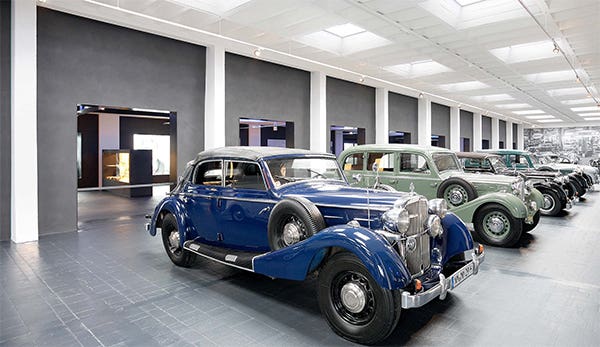Old Cars Q&A 2021: No 13
Kit Foster answers your old car questions. This time he talks about whitewall whitening and the mystery behind Marvel Marvel Mystery Oil in gasoline.
Q.[Regarding the reader’s suggestion in the Feb. 15 Q&A,] a proposed whitewall tire cleaner of Lestoil and bleach 50:50 would be SEVERELY corrosive to the tire, wheel, fender and person applying it. I wouldn’t recommend it.
Tires have protective oils which slowly migrate to the surface. Lestoil is a degreaser that would quickly strip away these oils deep into the tire. The tire, thus abused, would lose oxidation and ultraviolet radiation protection, so it would age quicker.
According to its Safety Data Sheet, Lestoil contains lye, a strong alkali, with a pH of 12-13. Lye will soften or remove paint, whether on a wheel or inside a fender. Brushing creates spray, so more than the whitewall gets wetted. Paint on the wheel side of the fenders will be softened and lose adhesion. Painted wheels or clear-coated aluminum wheels will lose protection. Lye also reacts with aluminum wheels once their clearcoat is breached. Expect aluminum wheels to pit. I’d also question whether drips going behind the wheel can be completely removed.
Bleach, sodium hypochlorite, is a strong oxidizer. If it reaches fender insides it will exacerbate further rusting. Expect rusting to be much faster than cars exposed to winter ice melting salts. Note that Lestoil strips the tire protectants; then bleach is free to oxidize the rubber. With paint the mechanism is reversed. Lestoil first weakens the film, then the bleach rusts metal below. That’s a one-two punch for tires and metal.
I think preservationists should avoid this cruel and unusual (automotive) punishment. The cure is worse than the disease. Use a tire cleaner from a reputable manufacturer. If you use anything not approved for tires, hose it off thoroughly and protect eyes, skin and clothing. Consider the collateral damage. — Bob Adler, Adler’s Antique Autos,
Stephentown, N.Y.
A. The suggestion said Lestoil would “get those whitewalls ‘white as a sailor’s dress whites’.” You’ve explained why. This is another case that vindicates the Material Safety Data Sheets that accompany useful-but-dangerous products. Recall my cautionary tale about MEK (Jan. 7). Read them before use, and if you still want to go ahead wear rubber or vinyl gloves.
Q.My dad, who loved old cars as much as I do, always used Marvel Mystery Oil in the gasoline of his cars, saying how good that additive was. Nowadays, there are so many additives added to gas that I wonder how important it is to add another. Yet, I still I add a small amount of Marvel just because dad said to. A few years ago, I toured a private collection of Pierce-Arrows. The owner, an old-timer, said he always adds Marvel Mystery Oil and two-cycle oil to the gasoline of his cars because, he said, modern gas is too “dry.” Can you explain exactly what is “dry” gas and whether adding Marvel and two-cycle oil would make it less “dry”? — Jim Remington, San Mateo, Calif.
A. Like it says on the label, it’s a mystery. Lots of people swear by it, though. According to the company website, “Unlike some products that simply burn up and billow out your car’s tailpipe, Marvel Mystery Oil offers long lasting protection to your car’s hard working engine, by cleaning and adding a lubricating layer unparalleled by the other so called ‘Fuel & Motor Treatments.’ Add Marvel to your gas tank to restore engine performance.”
The often useful Wikipedia (www.wikipedia.org) says: “Marvel Mystery Oil is an automotive product of the American Marvel Oil Company, founded by Burt Pierce in 1923. It is used as a fuel additive, oil additive, corrosion inhibitor, penetrating oil, and transmission leak stopper and seal relubricator. It is composed primarily of petroleum distillates, including mineral oil (60–100%), mineral spirits (10–30%), tricresyl phosphate (an antiwear and extreme pressure additive in lubricants, 0.1–1.0%), ortho-dichlorobenzene (a softening and removing agent for carbon-based contamination on metal surfaces, 0.1–1.0%), and para-dichlorobenzene (a precursor used in the production of chemically and thermally resistant polymers, <0.1%).” However, the commentary goes on to caution: “Auto manufacturers Ford and GM recommend against using engine oil additives, stating they are unnecessary in their contemporary engine designs and may void their warranties.”
I suspect the comment that gas is “too dry” relates to the fact that most gasoline available in the United States contains ethanol, which is also called ethyl alcohol, grain alcohol, drinking alcohol, spirits, or simply “alcohol,” and among other things absorbs moisture. Basically that’s what’s in the product known as “Dry Gas,” not to be confused with “Dri-Gas,” which is apparently a brand of propane.
I have not been in the habit of using Marvel Mystery Oil, although since experiencing problems with “today’s gas,” particularly when left for long periods in small engines, I do use stabilizer in my infrequently driven collector cars (vintage 1925-1930) and all my outdoor power equipment.
Readers’ first-hand experience will be welcome here. We all have opinions and know some folklore, which may or may not be helpful.
To submit questions to this column: E-mail
oldcars@aimmedia.com or mail to: Q&A, Old Cars,
5225 Joerns Drive, Suite 2, Stevens Point, WI 54481.
If you like stories like these and other classic car features, check out Old Cars magazine. CLICK HERE to subscribe.
Want a taste of Old Cars magazine first? Sign up for our weekly e-newsletter and get a FREE complimentary digital issue download of our print magazine.
*As an Amazon Associate, Old Cars earns from qualifying purchases.








